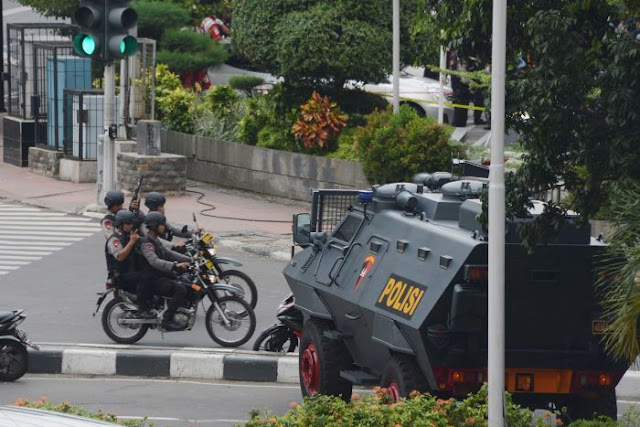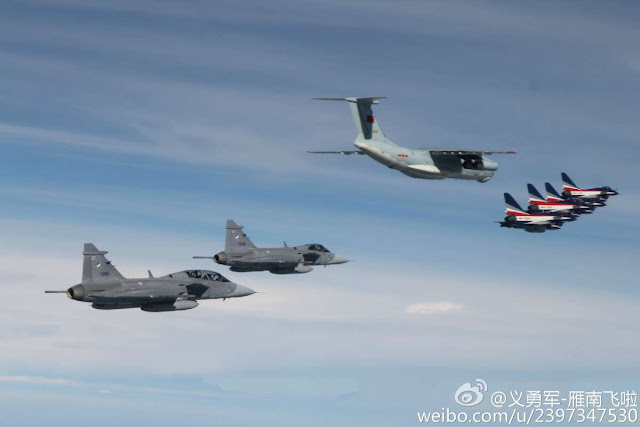G.I. Jihadis: Wherever US Foreign Policy is in Trouble, ISIS is There…
A pattern is beginning to develop. Wherever the US wants to put its military, ISIS shows up and conveniently justifies it. And whenever the US is having a problem persuading a foreign government to do what Washington desires, ISIS shows up. In fact, pretty much everywhere US foreign policy is in trouble, ISIS and similarly state-sponsored terrorism seems to show up and save the day.
ISIS itself is a creation of the US and its European and Middle Eastern allies. The US’ own Defense Intelligence Agency (DIA) admitted as much in a leaked 2012 report (.pdf) which stated:
If the situation unravels there is the possibility of establishing a declared or undeclared Salafist principality in eastern Syria (Hasaka and Der Zor), and this is exactly what the supporting powers to the opposition want, in order to isolate the Syrian regime, which is considered the strategic depth of the Shia expansion (Iraq and Iran).
To clarify just who these “supporting powers” were that sought the creation of a “Salafist” (Islamic) principality” (State), the DIA report explains:
The West, Gulf countries, and Turkey support the opposition; while Russia, China, and Iran support the regime.
When the US’ own Defense Intelligence Agency says the US sought the creation of a “Salafist principality,” the verbatim definition of the so-called “Islamic State,” in eastern Syria precisely where ISIS is now established, it is clear that ISIS is an enemy of the West in name only, and only to distract from the fact that this abhorrent terrorist organizations is in reality one of the West’s most potent and far reaching foreign policy tools. ISIS is a reboot of sorts of Al Qaeda which the US and its Saudi allies first created – intentionally – to wage proxy war against the Soviet Union with in Afghanistan during the 1980s.
Instead of waging war against the Soviet Union with Al Qaeda, the US is now waging an increasingly global war against Syria, Iraq, Libya, Afghanistan, and now clearly much of East and Southeast Asia with either ISIS or a similarly state-sponsored terrorist organization with.
What Other Explanation Could there Be?
What the world is expected to believe is that the “Islamic State in Iraq and Syria” so named because of where it is supposedly based and primarily operates, is currently fighting both the Syrian and Iraqi governments, Lebanon’s Hezbollah, Iran, and Russian airpower, apparently funded, armed, and backed by no one.
Additionally, we are expected to believe ISIS is also fighting thousands of “moderate rebels” the US and its allies claim to have armed, funded, and trained to the tune of several billion dollars. Not only are they fighting these moderates backed by a multi-billion dollar multinational coalition, but are fighting and have been winning. But it doesn’t end there. We are also expected to believe that ISIS is also weathering the combined military might of the US, France, Germany, the UK, Turkey, Saudi Arabia, Qatar, and Jordan.
It was just in August of last year that the joint US-Turkish terrorist group, the “Grey Wolves,” were implicated in a bombing in Southeast Asia’s Thailand. The bomb blast killed 20 and maimed many more in an attack that killed mostly Chinese tourists.
The attack was part of a wider terror campaign backed by the US and Turkey in China’s western Xinjiang region where Turkic Uyghur terrorists have been carrying out attacks for years. The US-Turkish backed Grey Wolves have been behind training and arming terrorists in China for years, and more recently have played a role in smuggling Uyghur fighters from China, through Southeast Asia – including through Thailand – and onward to Syria to fight the West’s proxy war there.
The bombing in August by a terrorist organization which at one point was run out of the US embassy in Ankara during the Cold War, was a warning to Bangkok that if it hinders rather than aids US “primacy” in Asia, it will suffer destabilization.
ISIS Punishes Indonesia for its “Sins”
And Indonesia is likewise “guilty” of many of the same “sins.” Jakarta while occasionally challenging China rhetorically, has repeatedly avoided getting too deeply involved in America’s provocations in the South China Sea. Additionally, Jakarta, like Bangkok, has sought to build greater economic ties with Beijing. This includes a deal that will see China construct a high-speed rail network throughout the country.
Bloomberg Business’ article, “China to Build $5 Billion High-Speed Rail Line in Indonesia,” would state:
China won the rights to build a $5.5 billion railway line in Indonesia as the Southeast Asian nation tries to upgrade its infrastructure to drive economic growth.
The massive infrastructure project will boost both China and Indonesia for decades to come. With the economic opportunities mass transportation brings a nation, opportunities for Washington to use socioeconomic disparity as a tool to divide and gain leverage over nations like Indonesia internally as it and other Western powers have done in the past will dwindle. Additionally, that China is building such projects in both Thailand and Indonesia, will only lead to greater ties between Beijing and a rising Southeast Asia – a Southeast Asia rising on the back of expanding and improving infrastructure.
With few attractive alternatives to offer Southeast Asia, the United States appears to have departed from offering “carrots” it does not have, and has instead resorted increasingly to the “stick.” But instead of wielding that stick itself, it has handed it to the “Salafist principality” it admittedly conspired to create with its allies in eastern Syria in 2012.
For the crime of wanting to move further out from under what the US itself calls its “primacy over Asia,” Indonesia has been attacked, and now has the menace of ISIS being further still dangled over its head if it continues forging stronger ties with Beijing.
Thailand and Indonesia are not alone. The US has openly declared in signed and dated policy papers that it believes controlling a unified Southeast Asian front, and arraying it against China, is the only way to encircle, contain, and eventually undermine and destroy the current political order in Beijing.
To that end, the United States has formulated an array of options ranging from supporting internal political subversion through US State Department-funded political fronts and nongovernmental organizations, to an increasing dependency on terrorism, to coerce Southeast Asia away from Beijing while dividing and disrupting Southeast Asia’s own geopolitical future.
The US and its allies could at any day expose and cut ISIS’ supply lines leading from their various subsidiaries and fronts around the world, back to Turkey, Saudi Arabia, Qatar, and its other state-sponsors. Instead, the US protects and cover up this extensive, global state-sponsorship of terrorism. As such, when “ISIS attacks,” it is really an extension of US foreign policy, and not merely ISIS alone that is committing this violence, nor for ISIS and its own agenda alone that it is being carried out.
Most ironic of all, perhaps, is the possibility that because of America’s dwindling credibility worldwide, and its waning influence in Asia, its complicity in the violence being carried out against the governments and peoples of Southeast Asia may – instead of creating a unified front against China – end up creating a unified front displacing Washington’s influence form the region. In many ways this is already underway, and Thursday’s attack in Jakarta may only stand to accelerate this process.
Tony Cartalucci, Bangkok-based geopolitical researcher and writer, especially for the online magazine“New Eastern Outlook”.
Source Article from http://www.globalresearch.ca/the-islamic-state-isis-goes-to-south-east-asia-us-saudi-plague-reaches-indonesia/5501798
Related posts:
Views: 0
 RSS Feed
RSS Feed

















 January 16th, 2016
January 16th, 2016  Awake Goy
Awake Goy 




 Posted in
Posted in  Tags:
Tags: 
















